Wiyeonjae Hanok Stay [Korea Quality] / 위연재 [한국관광 품질인증/Korea Quality]
5.6Km 2021-03-29
7, Jjoksaem-gil, Gyeongju-si, Gyeongsangbuk-do
This hanok (traditional Korean house) is located very near to Cheomseongdae Observatory. Its location in front of the Gyeongju Historic Areas allows guests to reach major sights in Gyeongju like Daereungwon Ancient Tomb Complex, Donggung Palace and Wolji Pond, and Hwangnidan-gil Street by foot. This hanok symbolizes the historicity of the city of Gyeongju in that during its construction a female skeleton and accessories made out of precious metals were excavated from the site. The accommodation’s name comes from the idiom “Muwijayeon (leaving nature as it is),” combining bamboo and pine trees with green grass, show its dedication to ideals of rest and philosophy.
There are five rooms in total, all ondol (under-the-floor heating system) rooms for two. Korean paper lining the walls and old-fashioned furniture speak to the ideal beauty of hanok. The raised floor space, which is attached to the “Munmu” room, is a great place to enjoy the scenery and take pictures. All rooms have modern bathrooms with shower facilities, and a complimentary breakfast is served in the cafe on site from 8:00 to 9:00 in the morning. The complex has abundant parking spaces for the guests.
Hwarang Guesthouse (화랑게스트하우스)
5.6Km 2025-06-05
136-1, Wonhyo-ro, Gyeongju-si, Gyeongsangbuk-do
Hwarang Guesthouse near Daereungwon, Gyeongju-si, Gyeongsangbuk-do, offers guestrooms each with separate toilet and bathroom. Refrigerators and laundry facilities are provided for guests, as are a shared-use PC and fax machine, while travel guides and other books are available in the lobby. Silla Kingdom sites such as Daereungwon, Cheomseongdae, Donggung Palace and Wolji Pond are reachable on foot; alternatively residents can hire a bicycle for 7,000 won a day.
Observatorio Cheomseongdae de Gyeongju (경주 첨성대)
5.7Km 2025-04-24
Cheomseong-ro 140-25, Gyeongju-si, Gyeongsangbuk-do.
Cheomseongdae es el observatorio astronómico más antiguo que existe en Asia. Construido durante el reinado de la reina Seondeok (632-647), fue utilizado para observar las estrellas y pronosticar el tiempo. Esta construcción de piedra es una hermosa combinación de líneas rectas y curvas, y fue designada como Tesoro Nacional el 20 de diciembre de 1962. Cheomseongdae fue construido con forma cilíndrica, con piedras de 30 cm de diámetro. Fueron apiladas 362 piedras para hacer 27 niveles. Aproximadamente a 4,16 m de altura desde el pie hay una entrada cuadrada de 1 ㎡ y un lugar para colocar una escalera de mano bajo ella. El interior está repleto con tierra hasta el nivel 12, y los niveles 19, 20, 25 y 26 tienen todos largas rocas aferradas en dos áreas, para formar la letra china “井” (jeong). Mide 9,17 m de altura y la piedra de la base de cada lado mide 5,35 m. El equinoccio primaveral y otoñal, los solsticios de invierno y de verano y los 24 períodos solares (también conocidos como el año solar astronómico) eran determinados por la observación de las estrellas. La letra “jeong” de piedra de la cima del observatorio, se cree que se ha utilizado como estándar para decidir las direcciones: norte, sur, este y oeste. Las 362 piedras utilizadas para construir Cheomseongdae representaban los 362 días del año lunar.
ALLEY HOSTEL & GUESTHOUSE [Korea Quality] / 앨리게스트하우스 [한국관광 품질인증/Korea Quality]
5.7Km 2021-03-29
12, Gyerim-ro 106beon-gil, Gyeongju-si, Gyeongsangbuk-do
ALLEY, a guesthouse located in the center of Gyeongju , is located only 3 min by foot from Gyeongju Station. Its supreme accessibility makes it a popular accommodation for backpackers in Gyeongju. There are no parking lots on the promise, but guests renting family rooms have access to parking services.
The first floor of the guesthouse has a lobby, common kitchen, luggage storage, and laundromat. The kitchen offers self-service complimentary breakfast. Visitors can make their own toasts and fried eggs to have with coffee and beverages. The second and third floors house guest rooms. The rooms available include single-occupancy rooms, double-occupancy rooms with single beds, double-occupancy rooms with bunk beds, triple-occupancy rooms with bunk beds, 4-person family rooms with bunk beds, and 4-person dormitory rooms with bunk beds. The family room supports up to five guests. All rooms are equipped with air conditioning and door locks, and have restrooms with shower facilities. Amenities include towels, soap, shampoo, hair conditioner, toothpaste, and hair dryer. Guests also have access to the third floor’s open-air terrace, and may store their luggage there even before their check-in. Daereungwon Ancient Tomb Complex lies about 10 min from the guesthouse, while Cheomseongdae Observatory and Donggung Palace and Wolji Pond can be found 20 min away.
Nadul Hanok [Korea Quality] / 나들한옥 [한국관광 품질인증]
5.7Km 2020-09-09
4-1, Jjoksaem-gil, Gyeongju-si, Gyeongsangbuk-do
+82-54-777-7738
Nadeul Hanok was opened in 2018 with brand-new facilities, in a location just a minute’s walk from Cheomseongdae Observatory in Gyeongju. You can feel a sense of healing in nature in the traditional style house, built in environment-friendly construction method with wood and earth. The ‘ㄷ’-shaped building creates a snug atmosphere and the hipped-and-gable roof and the curves of the roof tile show the traditional quiet and still flavor of a traditional Korean house. There are 7 rooms in Nadeul Hanok. Among them, the Garam, Gayeon, and Nuri Rooms are offered at 50,000 won for 2 persons during off-season so that visitors can enjoy staying in a traditional Korean house at more affordable prices. All rooms are equipped with a bathroom for better convenience and there is an individual thermostat all year round. Complimentary breakfast made of healthy convenience food is offered to all guests. The menu is composed of barley bread, fruit, coffee, juice, boiled egg, and biscuit, and is subject to change according to situation. What is good is that the breakfast can be delivered to the room if the delivery time is requested during breakfast time, which is from 8 to 9 AM.
It is possible to look around the tourist attractions near Nadeul Hanok on foot. In addition, there are CVs, fast food shops, bike rental shops, and hanbok rental shops adjacent to Nadeul Hanok, enabling a more convenient and joyful tour.
Bosque Gyerim de Gyeongju (경주 계림)
5.7Km 2023-02-20
Gyo-dong, Gyeongju-si, Gyeongsangbuk-do.
El bosque Gyerim se encuentra entre el observatorio Cheomseongdae y la fortaleza Wolseong de la ciudad de Gyeongju. El bosque está densamente poblado por antiguas zelkovas y sauces arraigados en suaves colinas y a lo largo del pequeño arroyo en la parte noroeste del bosque. Según la leyenda, el bosque está estrechamente relacionado con los mitos que rodean el nacimiento de Alji, el fundador del clan Kim de Gyeongju. Como tal, fue designado Sitio Histórico Nacional.
La leyenda cuenta que el rey Talhae escuchó a un gallo cantando desde lo más profundo del bosque Sirim. El canciller Hogong fue enviado a investigar. Al llegar, se encontró con un gallo debajo de un árbol en el que colgaba una caja de oro. Hogong de inmediato reportó su hallazgo al rey, quien le dio instrucciones para traer la caja de oro al palacio. El rey abrió la caja y encontró a un niño pequeño, Kim Alji. El bosque, que había sido llamado 'Sirim' o 'Gurim' fue sustituido por 'Gyerim' ('gye' significa gallo'). El nombre Gyerim también fue usado para referirse al reino de Silla.
Alji fue adoptado como hijo del rey, pero como la corona fue legada al rey Pasa de la familia Park, nunca ascendió al trono. El clan Kim volvió al linaje real con la coronación del rey Naemul unos años más tarde.
El monumento de piedra que registra el nacimiento de Kim Alji fue erigido en el tercer año del rey Sunjo en la dinastía Joseon. Situado cerca de la fortaleza real de Silla, el bosque está aún profundamente reverenciado como lugar del místico nacimiento del primer antepasado de la familia real del clan Kim de Silla. Encontramos flores amarillas de colza a lo largo del camino que conecta Daereungwon con Gyerim y Banwolseong, contribuyendo al ambiente mágico del bosque.
Instituto de Investigación Forestal de Gyeongsangbuk-do (경상북도 산림환경연구원)
5.8Km 2021-02-01
Tongil-ro 367, Gyeongju-si, Gyeongsangbuk-do.
+82-54-778-3813
Como tomar buenas fotos se está convirtiendo en una tendencia entre los jóvenes en Corea, los lugares que ofrecen fondos para imágenes llamativas y pintorescas están volviéndose muy populares. Uno de ellos es el Instituto de Investigación Forestal de Gyeongsangbuk-do. La zona más buscada para las fotografías dentro de este arboreto era antes el puente de troncos en el Parque Ecológico del Pantano. Sin embargo, el material de construcción del puente ha sido reemplazado recientemente por madera regular, por razones de seguridad. No se decepcione con esto, todavía se pueden tomar impresionantes fotos con el puente sobre el pantano como fondo.
Hay cuatro senderos que tienen al Parque Ecológico del Pantano como centro. Las flores y los árboles de diversas especies crean una escena diferente a lo largo de cada trayecto, ofreciendo muchas oportunidades para fotos excepcionales. Incluso un banco ordinario puede merecer algunas. Tomarse una foto sentado en el banco, con las hojas caducas cubriéndolo todo, le transmitirá un toque de color y naturaleza a la imagen capturada.
Tumba Real del Rey Naemul de Gyeongju (경주 내물왕릉)
5.8Km 2022-09-19
Gyo-dong, Gyeongju-si, Gyeongsangbuk-do
El rey Naemul fue el 17º monarca del reino de Silla (en el poder de 356 a 402) y se convirtió en el segundo rey de la familia Kim. El rey Naemul fue conocido como el primero en iniciar el título de rey de “Maripgan” y fue conocido por difundir los avances culturales de China al pueblo coreano. Cuando atacaron las fuerzas aliadas de Baekje y Japón, pidió ayuda a Gwanggaeto el Grande de Goguryeo y llevo a la gente a la victoria, contribuyendo al aumento de la fuerza del Reino de Silla. Después de su gobierno, el trono fue cedido exclusivamente a miembros de la familia Kim.
La tumba del rey Naemul es un montículo grande (22 m de diámetro y 5,3 m de altura) y se encuentra en la colina norte de la Escuela Neoconfuciana de Gyeongju. Un borde de piedras naturales se expone alrededor de la parte inferior del montículo, lo que apunta al hecho de que la tumba de la cámara interior estaba hecha de piedra. En el documento histórico Samguk Sagi (Historia de los Tres Reinos), no se encuentran registros sobre la tumba, pero el Samguk Yusa (Memorabilia de los Tres Reinos) describe la tumba del rey está en el suroeste de Cheomseongdae, que coincide con la ubicación de la tumba.
Festival de la Calle del Muro de Piedra del Parque Daereungwon en Gyeongju (경주 대릉원돌담길 축제)
5.8Km 2025-03-14
Hwangnam-dong, Gyeongju-si, Gyeongsangbuk-do
054-776-5267
Hwangnam Bread (황남빵)
5.8Km 2025-03-19
783, Taejong-ro, Gyeongju-si, Gyeongsangbuk-do
![Wiyeonjae Hanok Stay [Korea Quality] / 위연재 [한국관광 품질인증/Korea Quality]](http://tong.visitkorea.or.kr/cms/resource/51/2708951_image2_1.jpg)
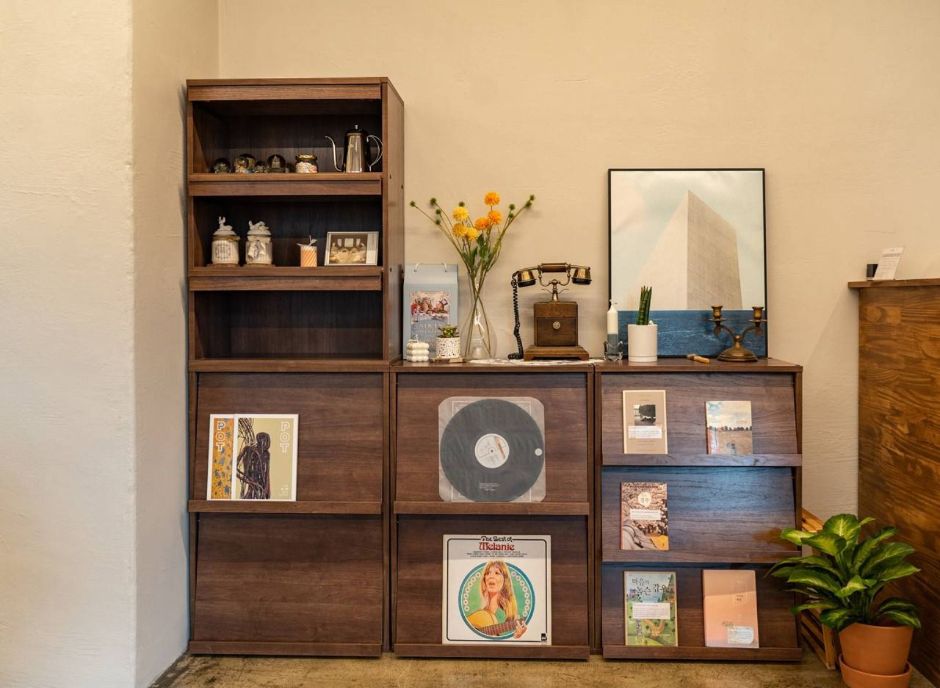
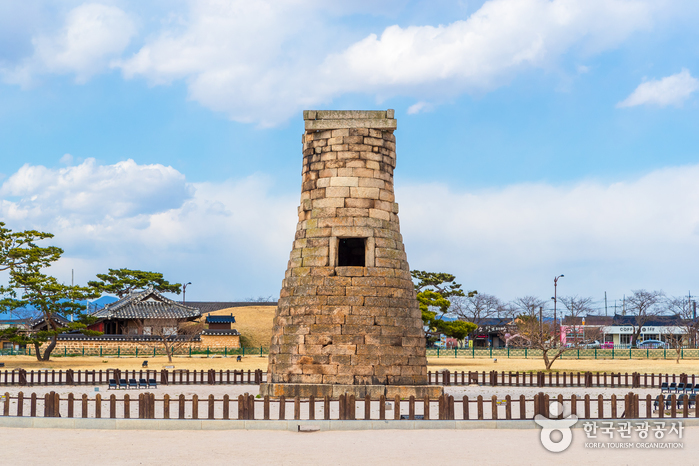
![ALLEY HOSTEL & GUESTHOUSE [Korea Quality] / 앨리게스트하우스 [한국관광 품질인증/Korea Quality]](http://tong.visitkorea.or.kr/cms/resource/80/2707780_image2_1.jpg)
![Nadul Hanok [Korea Quality] / 나들한옥 [한국관광 품질인증]](http://tong.visitkorea.or.kr/cms/resource/86/2636486_image2_1.jpg)

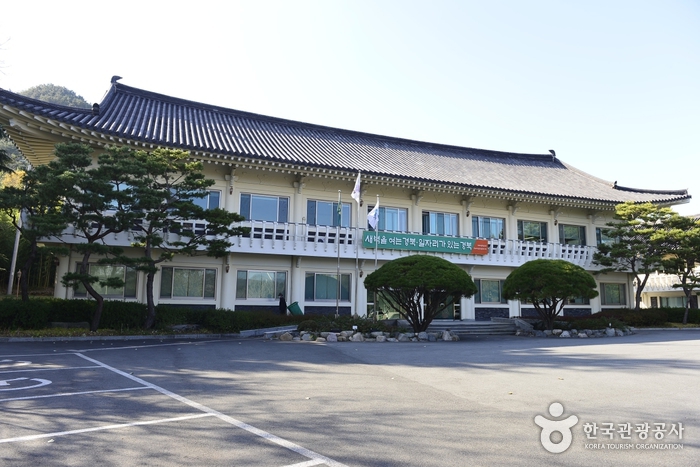
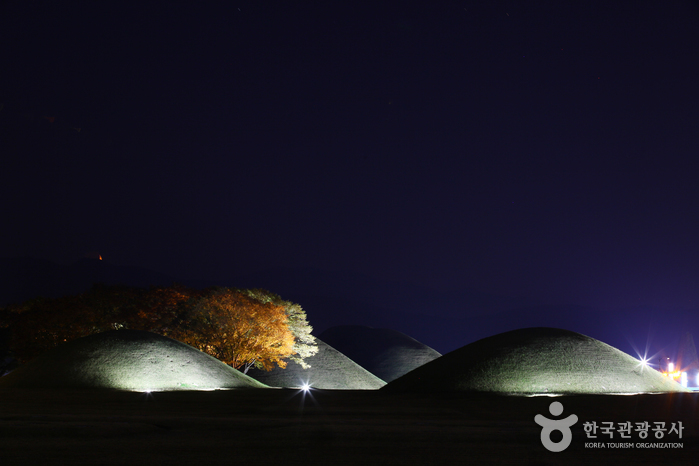
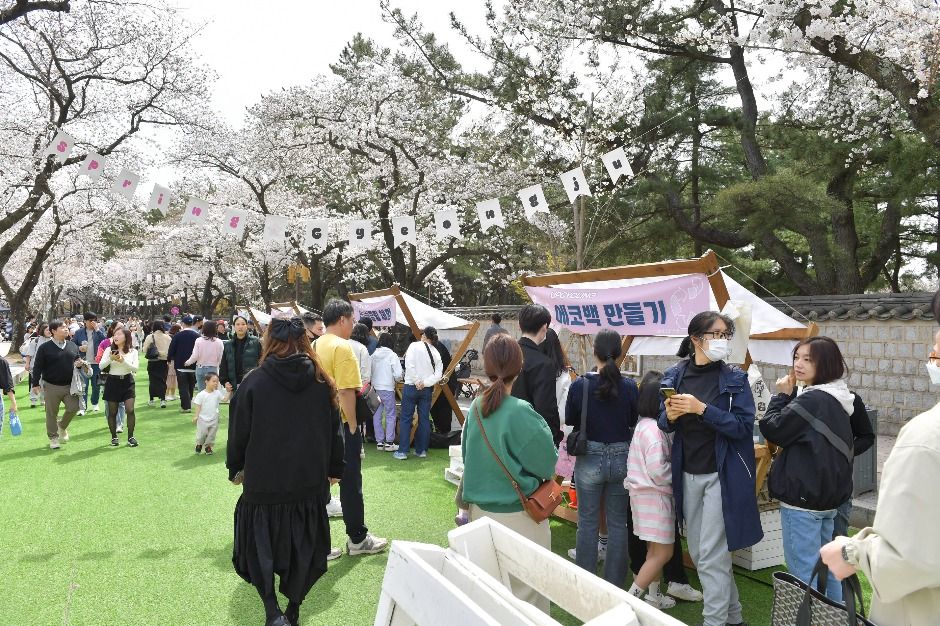
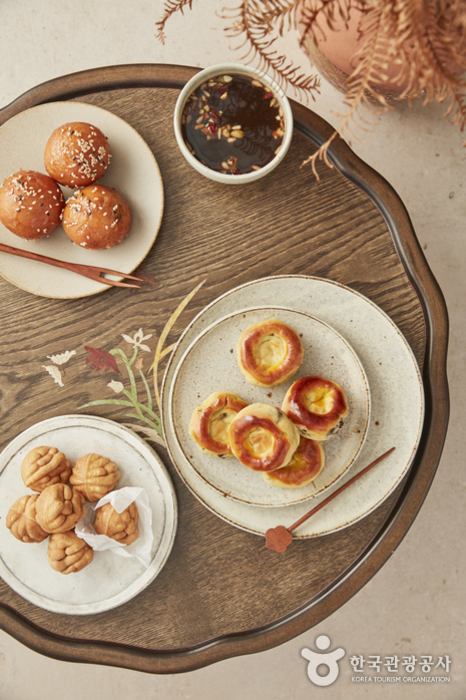
 Español
Español
 한국어
한국어 English
English 日本語
日本語 中文(简体)
中文(简体) Deutsch
Deutsch Français
Français Русский
Русский